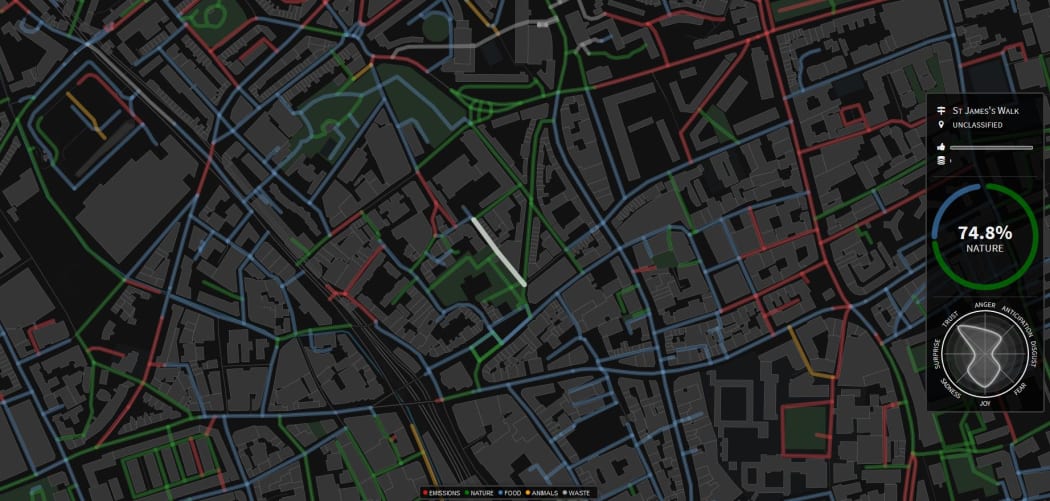Navigating the streets of big cities can be stressful.
But a scientist says mapping cities is about more than getting from A to B as quickly as possible.

Luca Maria Aiello creates smelly maps or urban smellscapes. Photo: goodcitylife.org
What, he asks, if we considered creating our journeys by stimulating our senses, not just getting to our destinations quickly?
A network of scientists has set out to do just that, creating ‘smelly maps’ or urban smellscapes.
Luca Maria Aiello started goodcitylife.org to think about urban problems that have received little attention.
Aiello, a social science researcher at Nokia Bell Labs, says urban planners often focus on optimising space, transport, energy and people management in cities, but his work takes a different approach.
“All these aspects are very good, are fine but they’re not really the elements that make the life of a person great in a city.”
Aiello and his team aim to maximise the happiness of people living in cities. They have so far created maps for 11 cities across the world.
He says people’s senses are at the base of all their experiences, and the street guides aim to provide the route with the best possible experiences.
“Imagine when we stand in a street, it’s not about, you know, going from A to B in the most efficient way, but it’s about the experiences we have when we walk for example, so all about the smells, the sounds, the things we see around us.”
Aiello and his team used social media data to determine where and what each city’s smells were, and then set about determining the most fragrant way of getting around.
“We mine social media data, so online pictures that are posted in different social media and we look at the tags that people put on these photos and these tags might describe some smells that are depicted in the picture.
“By mining millions and millions of pictures in a city, we are able to build a very refined smell profile of a street.”
He says smell is very difficult to measure and in the past city officials and planners have only focussed on negative smells, mainly in relation to complaints.
“The smell of trash, the smell of pollution for instance, but very rarely on positive smells.”
Through social media he says they have been able to capture the whole spectrum of fragrances.
The website’s maps have 10 categories of smell, ranging from food to animals, people, and industrial waste.
The team have worked to create different maps linking the smells involved to different emotions experienced while smelling them.
“You can see the different composition of emotions that are tied to the smell, so you have a description of emotion… eight basic emotions that people can feel while smelling that type of smellscape in a certain street.”
The website also features ‘happy maps’, which create different pathways based on attractive views, smells and sounds.
“The final vision of this is to have – thanks to social media data – a set of… perceptual layers of the city that can be out together and used to power services for people who walk around the city.”
Aiello, who has previously worked at Yahoo and Flickr and Tumbler, says these days there is often criticism of social media, from those who believe it is not good for people’s well-being or happiness.
Now we face the challenge of using it to enhance people’s lives, he says.
“It’s really the next very important step to use all the data, all the data that people generate every day, not just to allow people to communicate better, but also to feel better.”

